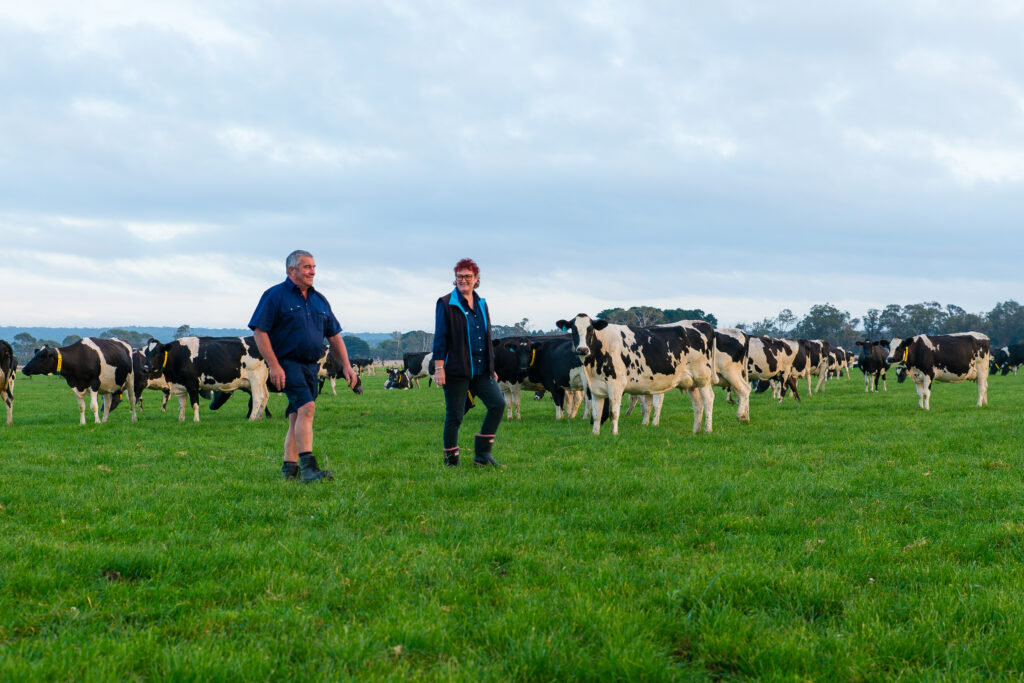Juan Suotto, Commercial Advisor in Genetics at Gensur, LIC’s distributor in Uruguay, recently visited New Zealand to learn more about how our farming systems can benefit Uruguayan farmers.

A qualified vet and dairy farmer, Juan joined Gensur in 2016 to sell LIC genetics to farmers. He is also technical support for the Gensur sales team.
He says he is proud to be part of a company with more than 30 years contributing to Uruguayan genetics.
“I was always interested in herd improvement and selecting the bulls for my farm. Gensur allows me to do that for other farmers too. I enjoy sharing my experience and working to find the most profitable genetics for them”.
The simpler, the better
Juan’s visit wasn’t his first time in New Zealand. In 2014, Juan and his twin brother worked on a Taranaki farm for a year. Here, they witnessed the typical Kiwi dairy farm in action and learned more about pasture management.
Juan was impressed with the simplicity of the farming system and the excellent pasture management. The Taranaki farm was a split-calving unit, with high input and extremely high production of milk solids per cow and per hectare.
“When we returned to Uruguay, we implemented these improvements on the family farm. We started to utilise more pasture for the cows’ diet, and we realised that the genetics we were using were not the most efficient for our farm system. For that reason, we switched from American to 100% New Zealand genetics,” says Juan.
“In the first generation of using LIC, we saw results in milk solids production and reproduction. The farm has grown considerably over these years, and I think the genetics played a fundamental role in that”.
Juan’s farm, Tambo el Nenengo, is in Chamizo-Florida, Uruguay, approximately 1.5 hours from Gensur’s head office in Montevideo.
Agriculture runs deep in Juan’s family. His grandparents handed down their 180-hectare (ha) dairy farm to his parents, now Juan and his brother – an agronomist engineer – own it. Even his two young daughters love walking the farm with him to see the cows.
A farm manager and four additional staff run Tambo el Nenegro, while Juan lives in Montevideo with his wife and daughters. Currently milking 250 cows (60% crossbred and 40% Friesian) in a split-calving system, Juan plans to expand the operation to 500 cows and purchase another 150ha soon.
To achieve this goal, Juan believes they can simplify their system even more. They have already successfully moved to a 3-in-2 milking regime to offer a better work-life balance to their staff and help with animal health and the cost of production.
“During my current visit to New Zealand, I looked at how we can better manage reproduction, simplify our farming system, and benefit from different flexible milking options – not only how they could work for us but help other Uruguayan farmers,” says Juan.
What Juan learned from his time in New Zealand

Juan joined a tour group of farmers from Uruguay for the last two weeks of his visit. LIC’s inbound group tours give international farmers an up-close experience of why the New Zealand dairy industry is one of the most robust and resilient in the world.
He says the whole group is appreciative of the farmers who opened their gates for the tour and answered every question with detail.
“They [the Uruguayan farmers] were able to observe simple and robust dairy systems, which easily adapt to external changes such as milk price or inputs”.
“I think the most important learning was, regardless of the system, New Zealand farmers centre their strategies around pasture growth and the cows’ feed demand. Cows calve when the grass harvest is high and that is the key to profitability”.
“Without a doubt, New Zealand genetics play an important role to achieve good results. I saw beautiful LIC-bred cows producing very well from different pasture feed systems. They really are healthy cows that are easy to milk, resilient with good fertility and productive efficiency.”
Juan was also impressed by the data New Zealand farmers collect and how they use it to make informed decisions on-farm.
“Uruguay has no integrated recording and processing data service as LIC has. The herd testing is also independent. On my own farm, we collect samples from the cows, send them to independent laboratories, and analyse the data ourselves. It is a complicated process, but it pays off.”
Both Uruguay and New Zealand are known as exporters of milk products – mainly milk powder – and both industries value the quality of milk.
“High milk solids are really important to get a good milk price and LIC-bred cows are the best for that”.
He says there are some differences in climate and environment between Uruguay and New Zealand but both dairy industries are based on a high percentage of pasture and the consumption efficiency of cows. That is where he’s seen the positive impact of LIC genetics.
“Pastures are of different varieties here [in Uruguay], they don’t last as long as New Zealand pastures. We also have a lower stocking rate and need more labour on our farms, so a cow that costs less to maintain and is an efficient producer significantly helps your profitability. I’ve experienced that on my own farm.”
“I think [LIC] is the solution for pastoral dairy farmers. In my opinion, they have the best bulls to do the job on Uruguayan farms.”



